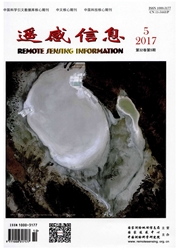

 中文摘要:
中文摘要:
在陕西绥德黄土丘陵沟壑区韭园沟流域25个样区(每个样区约4Km。),以1:1万地形图制作的水平分辨率为5m的DEM为研究对象。采用6种不同算法分别提取坡向。运用方差分析、排序分析、比较分析等方法和信息论中熵的概念,通过比较不同算法所提取坡向的标准差、变异系数、坡向余弦中误差、不同坡向的面积数据、坡向提取所耗费的机器时间,认为在黄土丘陵沟壑区提取坡向选用三阶反距离平方权差分算法和三阶反距离权差分较为合理。根据实际生产部门需要,提出并实现了对坡向信息进行评价时必须分类别讨论的思路。研究可望为在本区域基于DEM提取准确的坡向信息时选择算法提供参考。
 英文摘要:
英文摘要:
In the 25 sample areas (4.2 Km^2 per area) in Loess Hill and Gully Area of Suide, Shannxi province, the DEM of resolution at 5m from the map 1 : 10000 is taken as the research object and 6 algorithms for deriving aspect are adopted. Employing the variance analysis, the sequencing analysis, the comparative analysis, and the concept of entropy in the information theory, the researcher compares the aspects derived by different algorithms in such aspects as the standard deviation, the variation parameter, the median cosine error of the aspect, the area of the aspect at different grade, and the time needed for deriving the aspect. Then it concludes that the reasonable algorithms are those of three-order inverse distance square weight difference and three-order inverse distance weight difference. According to the actual requirement of production, the concept that the aspect should be studied by dividing it into different grades is proposed. The study is hopeful to provide references for selecting proper algorithms in deriving the accurate information of the aspect in this area.
 同期刊论文项目
同期刊论文项目
 同项目期刊论文
同项目期刊论文
 期刊信息
期刊信息
